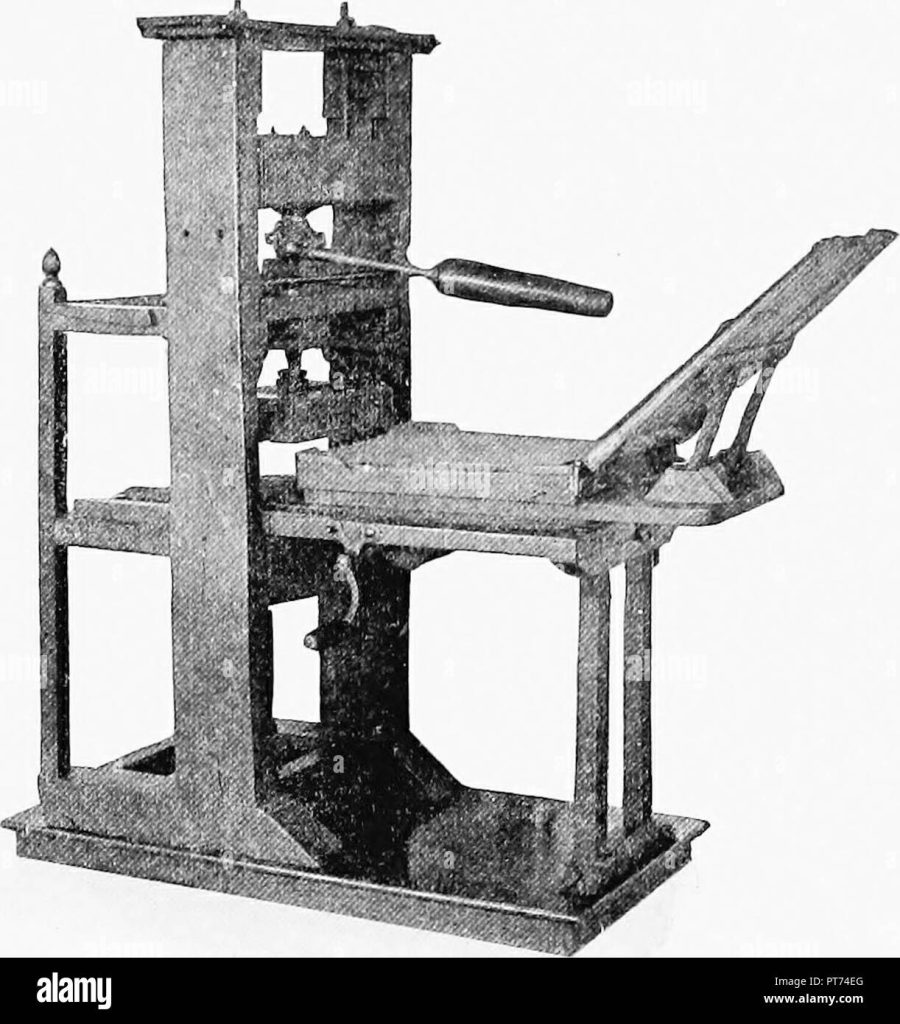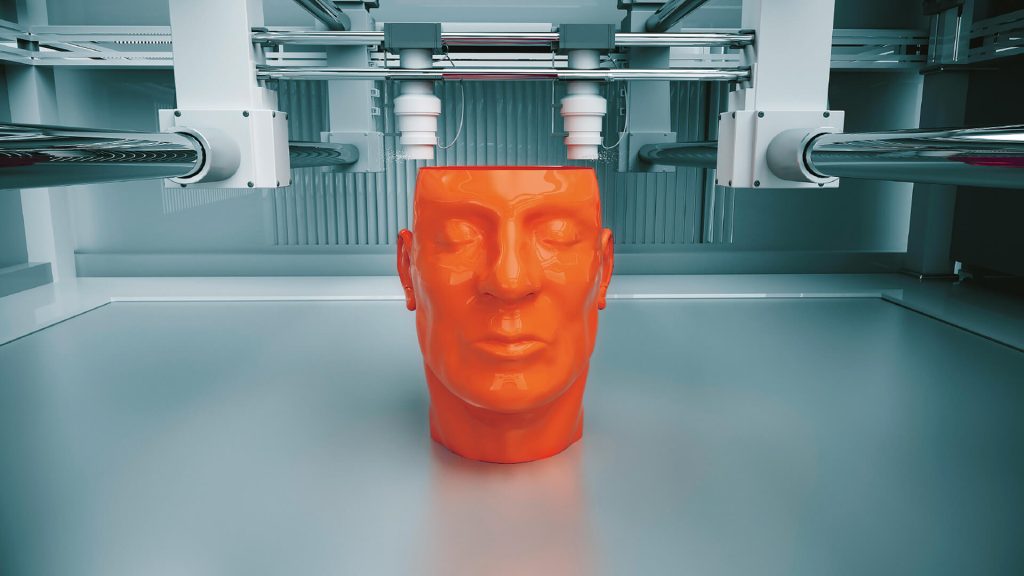Printing, a revolutionary invention that has profoundly impacted human communication and knowledge dissemination, has come a long way since Johannes Gutenberg introduced the mechanical movable-type printing press in the 15th century. Over the centuries, printing has evolved from traditional methods to modern, cutting-edge technologies, including 3D printing. In this comprehensive exploration, we will trace the fascinating journey of printing, from its humble beginnings to its current state of innovation, while also delving into the profound societal changes it has brought about.
I. The Gutenberg Press: A Game-Changer

Johannes Gutenberg’s invention of the printing press around 1440 marked a pivotal moment in human history. Prior to the Gutenberg Press, books and manuscripts were laboriously copied by hand, making them scarce and prohibitively expensive. Gutenberg’s innovation allowed for the mass production of books, making knowledge more accessible and affordable to a broader audience. His movable-type printing press used individually cast metal letters that could be rearranged and reused, significantly speeding up the printing process. This invention laid the foundation for the dissemination of knowledge, the democratization of information, and the rapid spread of ideas.
The Gutenberg Press not only transformed the way books were produced but also fueled the Renaissance. The availability of printed materials encouraged literacy, critical thinking, and the exchange of ideas. This period saw the publication of seminal works like Copernicus’ “De revolutionibus orbium coelestium” and Galileo’s “Sidereus Nuncius,” which revolutionized our understanding of the universe.
II. The Spread of Printing: A Global Phenomenon
The impact of printing technology was not limited to Europe. In the 16th century, the spread of printing led to the Protestant Reformation and an explosion of scientific and literary achievements. The ability to disseminate ideas rapidly transformed society and spurred innovation in various fields.
In China, printing with movable type dates back to the 11th century during the Song Dynasty, several centuries before Gutenberg’s press. In Korea, the “Jikji,” printed in 1377, is recognized as the world’s oldest extant book printed with movable metal type. These early innovations in East Asia paved the way for Gutenberg’s later developments in Europe.
Visionary printers and publishers like Aldus Manutius in Venice and Christopher Plantin in Antwerp played crucial roles in advancing the art of printing during the Renaissance, producing beautifully crafted books that are now treasured as works of art. Manutius, in particular, introduced italic typefaces and the use of semicolons, shaping the modern conventions of printing and typography.
III. The Industrial Revolution and Modern Printing
The 19th century witnessed the integration of printing into the Industrial Revolution. Steam-powered presses and advancements in papermaking made printing faster and more efficient. This era saw the rise of newspapers, magazines, and other periodicals, enabling mass communication on an unprecedented scale. The Linotype machine, invented by Ottmar Mergenthaler in the late 19th century, further streamlined the printing process by automating typesetting. The result was an explosion of printed materials that shaped public opinion, influenced politics, and brought knowledge to the masses.
This period also saw the rise of the modern book publishing industry. Publishers like Macmillan, Harper & Brothers, and Random House became influential players in the dissemination of literature and knowledge. Libraries expanded their collections, and public education benefitted from affordable textbooks.
IV. Digital Printing: The Information Age
The 20th century brought about another revolution in printing technology with the advent of digital printing. The development of laser and inkjet printers made it possible for individuals and businesses to produce high-quality printed materials in-house. Desktop publishing became more accessible, and the internet facilitated the distribution of digital content. The transition from analog to digital printing not only democratized printing but also paved the way for customization and personalization, as print-on-demand services allowed for tailored publications and marketing materials.
Digital printing also revolutionized the graphics and design industry. Software like Adobe Photoshop and InDesign became essential tools for graphic designers, enabling the creation of visually stunning publications and advertisements. The combination of digital printing and design software opened up new avenues for creativity, allowing designers to experiment with color, layout, and typography like never before.
The rise of digital printing also had a profound impact on journalism. Newspapers and magazines transitioned to digital formats, launching online editions and multimedia content. While print media faced challenges in the digital age, it also found new ways to engage audiences through interactive features and real-time updates.
V. 3D Printing: The Future of Printing

In recent decades, 3D printing has emerged as a groundbreaking technology with applications in various industries. Also known as additive manufacturing, 3D printing allows for the creation of three-dimensional objects by layering material, such as plastic, metal, ceramics, or even biological matter, in a precise and controlled manner. This technology has revolutionized fields like aerospace, healthcare, and manufacturing, enabling the rapid prototyping of complex components and the production of custom-made products.
3D printing has proven particularly valuable in healthcare. It has enabled the creation of patient-specific medical implants, prosthetics, and even human tissue. Surgeons can now practice complex procedures on 3D-printed models, reducing the risk and improving the outcomes of surgeries. Moreover, 3D bioprinting holds the promise of creating functional organs for transplantation, potentially solving the global organ shortage crisis.
The aerospace industry has also embraced 3D printing, using it to manufacture lightweight yet durable components for aircraft and spacecraft. This technology has reduced manufacturing costs, improved fuel efficiency, and accelerated the development of cutting-edge aerospace technologies.
VI. Challenges and Opportunities
While printing has come a long way, it still faces challenges and opportunities in the digital age. The rise of e-books and online publications has disrupted the traditional publishing industry, forcing it to adapt and find new ways to engage readers. Additionally, environmental concerns related to paper production and waste must be addressed through sustainable printing practices. Reducing the carbon footprint of printing and promoting responsible consumption of paper products are essential steps in mitigating the environmental impact of this industry.
Moreover, 3D printing has the potential to transform industries and even change the way we manufacture goods. However, challenges such as material limitations, intellectual property concerns, and the need for standardization must be addressed to fully harness its potential. As 3D printing becomes more accessible to consumers and small businesses, it opens up opportunities for creativity and entrepreneurship, allowing individuals to turn their innovative ideas into tangible products.
Printing has evolved from its origins with Gutenberg’s press to the digital and 3D printing technologies of today. It has played a pivotal role in the dissemination of knowledge, the spread of ideas, and the advancement of society. As we move further into the digital age, printing continues to adapt, offering both challenges and exciting opportunities for innovation and creativity. Whether it’s producing a book, a newspaper, or a complex 3D-printed object, printing remains an essential part of our modern world, bridging the gap between the digital and physical realms and shaping the course of human progress.
The journey of printing is far from over, and its next chapters promise even more remarkable advancements and transformations. As we look ahead, it is imperative to embrace sustainable and responsible printing practices while exploring the limitless possibilities of 3D printing. This will ensure that this timeless technology continues to enrich our lives for generations to come, fostering innovation, promoting accessibility, and driving progress in


Average Rating